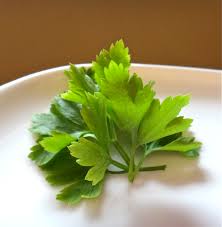
记忆方法
将“garnish”分解为“gar”和“nish”,想象在“garage”(车库)里进行装饰(nish),比如装饰一辆汽车,这样就能记住“garnish”是点缀或装饰的意思。
以上内容由AI生成, 仅供参考和借鉴
中文词源
garnish 装饰
来自法语。来自PIE*wer, 保护,隐藏,词源同warrant, weir. 后指装饰。
英语词源
- garnish
-
garnish: [14] Garnish was originally a fairly utilitarian verb, meaning simply ‘fit out, equip, supply’ or ‘adorn’. Its modern culinary application did not develop until the late 17th century. It came from garniss-, the lengthened stem of the Old French verb garnir ‘equip, adorn’. This was borrowed from prehistoric Germanic *warnjan, which presumably came from the same base as produced *warnōjan ‘be cautious, guard, provide for’ (source of English warn).
The notion of ‘warning’ is preserved in the legal term garnishee [17], applied to someone who is served with a judicial warning not to pay their debt to anyone other than the person who is seeking repayment.
=> warn - garnish (v.)
- late 14c., "to decorate, adorn, beautify," also in Middle English "equip (a place) for defense; arm (oneself) for battle; prepare to defend," from Old French garniss-, present participle stem of garnir "provide, furnish; fortify, reinforce" (11c.), from Frankish *warnjan, from Proto-Germanic *warnon "be cautious, guard, provide for" (cognates: Old High German warnon "to take heed," Old English warnian "to take warning, beware;" see weir, and compare warn).
Sense evolution is from "arm oneself" to "fit out" to "embellish," which was the earliest meaning in English. Culinary sense of "to decorate a dish for the table" predominated after c. 1700. Older meaning survives in legal sense of "to warn or serve notice of attachment of funds" (1570s). Related: Garnished; garnishing. - garnish (n.)
- late 14c., "set of tableware" (probably a dozen; usually pewter), from garnish (v.). Sense of "embellishments to food" is from 1670s.
权威例句
- 1. Garnish the plate with whipped cream rosettes and fresh fruits.
- 用玫瑰花形的掼奶油和新鲜的水果作配菜点缀盘子。
- 2. Garnish with fresh herbs. Serves 4.
- 配以新鲜香草,4人份。
- 3. Reserve some watercress for garnish.
- 留点豆瓣菜作配菜。
- 4. Garnish with mint sprigs.
- 用薄荷枝装点。
- 5. The sandwiches came with a rather limp salad garnish.
- 三明治配着蔫软的色拉饰菜.